With its rich history and picturesque lakeside setting, the city of Lake Oswego, Oregon is one of the most desirable places to live in the Portland area. Homeowners fortunate enough to live in this vibrant community often find that owning a home in Lake Oswego comes with a few unique challenges, especially when it comes to remodeling.
As a custom home remodeling firm, our team at Lamont Bros. has transformed dozens of homes around Lake Oswego. Having seen behind the walls and under the floorboards of these homes, we have a pretty good idea of what to expect when remodeling a home in Lake Oswego.
In this article, we’re going to share that insight with you. By the time you reach the end of this page, you should have a better understanding of what a remodeling project might look like for your Lake Oswego home. With that information, you’ll be able to plan and oversee a successful renovation project. The topics we’ll discuss include the following:
- An introduction to Lake Oswego and its history
- Common remodeling projects for Lake Oswego homes
- Issues you may encounter when remodeling in Lake Oswego
What makes Lake Oswego a desirable place to live?
Lake Oswego is a community 7 miles south of Portland. As one of the city’s most recognizable suburbs, it features some of the largest, most expensive homes in the state. Throughout the years, Lake Oswego has been home to plenty of famous celebrities, including NBA star LaMarcus Aldridge and rapper Yeat. However, before it became home to Portland’s well-to-do, Lake Oswego played an important role in the development of Oregon’s economy.
A Brief History of Lake Oswego
The town of Oswego, Oregon was founded in 1847 on the east bank of Sucker Lake (now Oswego Lake). By the late 1800s, Oswego was the iron-producing capital of the state thanks to the Oregon Iron and Steel Company.
With the collapse of the Oregon iron industry in 1896, iron tycoon William M. Ladd turned his attention to residential development. In the early 1900s, Ladd began selling large plots of land around the shore of Sucker Lake, kickstarting Oswego’s reputation as a high-class neighborhood for Oregon’s elite.
Large, stately homes began to appear on Sucker Lake’s shores in the 1930s, including swimwear mogul Carl Jantzen’s sprawling island estate. Development of the lake’s shore continued well into the 20th century. After the initial onslaught of large homes on large land lots, major suburban infill development took place in the 1950s and 1960s. During that time, Oswego was renamed “Lake Oswego,” and Sucker Lake was renamed “Oswego Lake.”
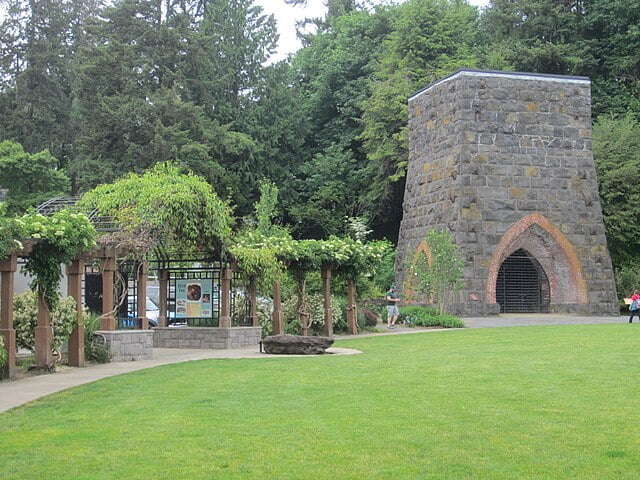
Neighborhood Information
Today, impressive lakefront homes worth several million dollars line the shores of Oswego Lake. More affordable suburban neighborhoods occupy the area to the north and south of the lake. Characterized by medium-size lots and high-end construction, Lake Oswego remains one of the most well-respected communities in the Portland area.
Lake Oswego has over 12,000 single-family homes with an average size of 2,400 square feet. The average home value in the area is $997,000, and the median household income is $114,000 according to census data.
The community is known for its tree-lined streets and park-like appearance. Downtown Lake Oswego features top-tier shopping and dining options, and the historic Oswego Lake Country Club offers an exclusive 18-hole golf course. The Lake Oswego School District is ranked #1 in the state.
What are some common remodeling projects for Lake Oswego homes?
While Lake Oswego is home to many beautiful homes built with quality craftsmanship, even the nicest of homes still need an update every now and then. Because the development of Lake Oswego spans so many decades, different eras of home construction often benefit from different types of remodels. Below are some of the most common types of home remodeling projects in and around Lake Oswego.
Seismic Retrofits & Foundation Repair
Homes built before 1950 tend to be hit-and-miss when it comes to structural integrity. Many homes built during this era tend to lack shear strength, which prevents the home from collapsing during side-to-side movement in an earthquake. Seismic retrofit remodels reinforce the home’s walls and increase its shear strength.
It’s also common for homes this age to lack the proper foundation footings, which can compromise the structural integrity and stability of the foundation. In this case, foundation repair or replacement may be necessary to ensure the safety of your home and those who live there.
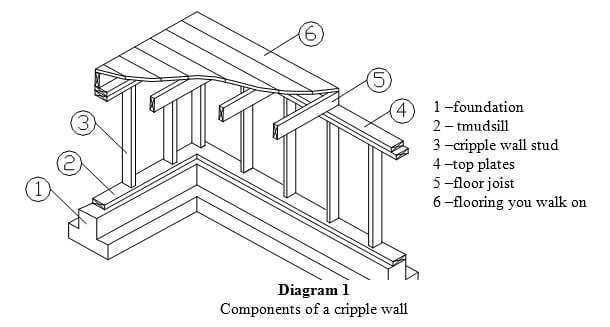
Additions
While homes built after 1950 don’t tend to have the same structural issues as their earlier counterparts, they do have a few quirks. One of the most common challenges among homes built in the 1950s and 1960s is their size. Most modern homeowners want their homes to have more space than the typical home from this era.
Because of this trend, some of the more common remodel projects we see in homes built during the 50s and 60s are additions. Homeowners often use these projects to add shared living space, such as a living room or kitchen addition. It’s also common to do a primary suite addition to expand or replace the primary bedroom and its bathroom.
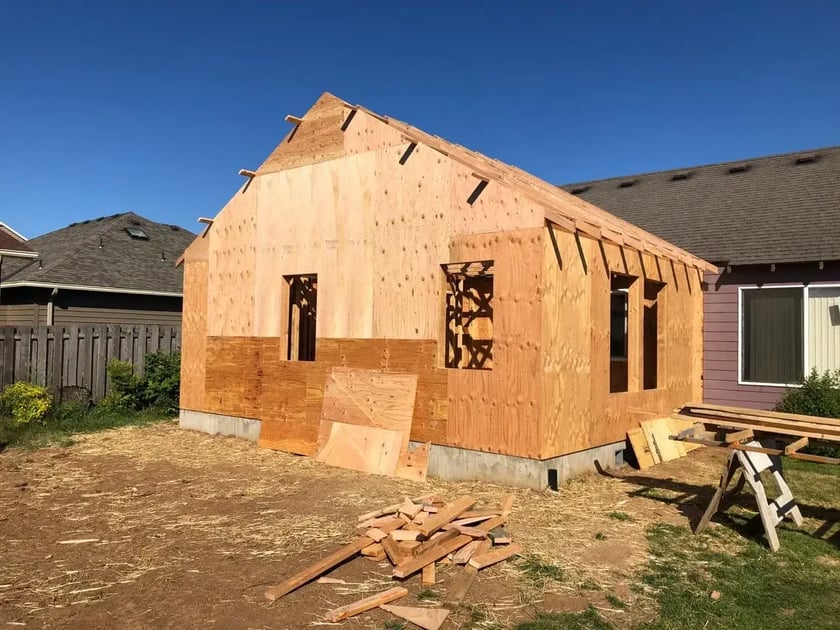
Kitchen Remodel
Like the homes themselves, the kitchens built during the 20th century were smaller than modern kitchens. They were also usually boxed in and separated from the rest of the house, which differs from the open floor plans in style today. In general, the way modern homeowners use their kitchens has changed, and kitchen design must change with them That’s why kitchen remodels are another popular choice in homes from this era.
It’s common for homeowners to want to expand and open up their kitchens when remodeling Lake Oswego homes built during the 50s and 60. This comes with the added benefit of being able to design a kitchen remodel tailored specifically to their own unique needs and cooking habits.
Bathroom Remodels and Additions
Sticking with the theme, bathroom expansions are another frequent remodel project we see among 50s and 60s, and even some 70s-era homes. This is often because the original primary bathroom is too small for the homeowner to use comfortably.
Expanding a bathroom can be a tricky process, as it requires reallocating space in the home. In homes with limited space to begin with, it’s often a better idea to simply do an addition. This saves you from having to manage the give-and-take caused by expanding a bathroom into an existing space in the home.
Cosmetic Updates
Getting into the 1970s, 1980s, and beyond, many Lake Oswego homes of this era tend to be in need of a cosmetic update. Many of them are in the awkward “not-old-enough-to-be-retro, not-new-enough-to-be-current” stage.
Cosmetic remodels involve changing very little in regard to the structure of the home. Rather, they focus on updating the surface finishes and aesthetics of the home’s interior. A cosmetic refresh may include new paint, refinishing or replacing the flooring, refacing or replacing cabinets, and updating the appliances, lighting, and plumbing fixtures throughout the house.
What challenges should you expect when remodeling in Lake Oswego?
When remodeling a home in Lake Oswego, there are a few common challenges you may encounter. To make sure you’re aware of the risks, here are a few issues you could face during the remodeling process.
Architectural Diversity
As mentioned above, Lake Oswego features homes from every era of the 20th century. While this makes for a fun, diverse community, it also has some challenges. Because the homes in Lake Oswego are so different from one another, it can be difficult to pinpoint which approach will be best for your home.
What works for one home built in 1930 won’t work for another home built in 1970. This is why you should work with a skilled remodel designer who understands how to tailor your home to your needs, regardless of the year in which it was built.
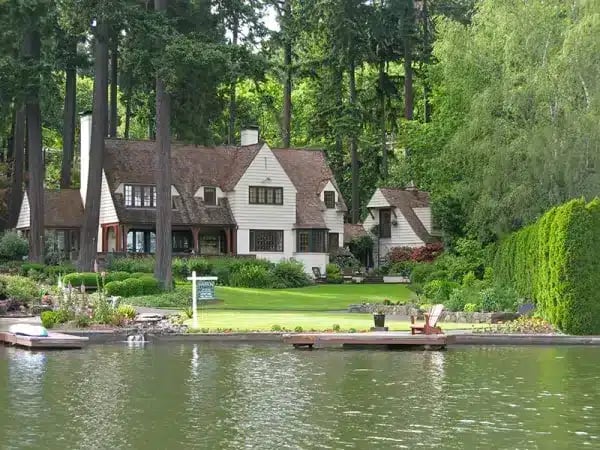
Lake Oswego Historic Preservation Regulations
Like Portland’s historic districts, Lake Oswego regulates alterations to historically significant homes. However, the rules in Lake Oswego are different than they are in Portland. These rules only apply to homes on the National Register of Historic Places or Lake Oswego Landmark Designation List.
Lake Oswego historic preservation regulations consider all exterior changes to a registered home to be part of its history. So, if the home was built in 1920 and an addition was added in 1980, the regulations protect the 1980 addition just as much as the original structure.
Furthermore, planned additions to a Lake Oswego home should reflect the style and aesthetic of current homes rather than match the style of the original home. In other words, preservation regulations require there to be a visual distinction between the original historic structure and the contemporary addition.
Foundation & Structural Concerns
Because homes built before 1950 were not up to snuff on shear strength or seismic code, you should consider the safety of your home’s foundation when planning a remodel. The integrity of your home’s foundation influences what changes you can make to the rest of the home.
Homes built after 1950 are generally more structurally sound. However, that doesn’t mean there aren’t issues with the foundation. Another thing to consider is whether or not your home has a conditioned crawl space. An unconditioned crawl space can reduce energy efficiency and put your home at risk for mold, mildew, and rot. Not to mention the bugs.
Hazardous Materials
Throughout the 1900s, several hazardous materials were used in residential construction. The two major ones are lead paint and asbestos. Lead paint was especially popular in the early 1900s and was commonly used on home exteriors. Unfortunately, it is also proven to cause severe neurological damage in young children.
Not to be outdone, asbestos, which was used in everything from plaster to flooring until the 1970s, can cause respiratory illness including lung cancer. Handling and removal of these hazardous materials should be left to a professional. If you’re not sure if your home contains lead or asbestos, treat it like it does until you can prove otherwise.
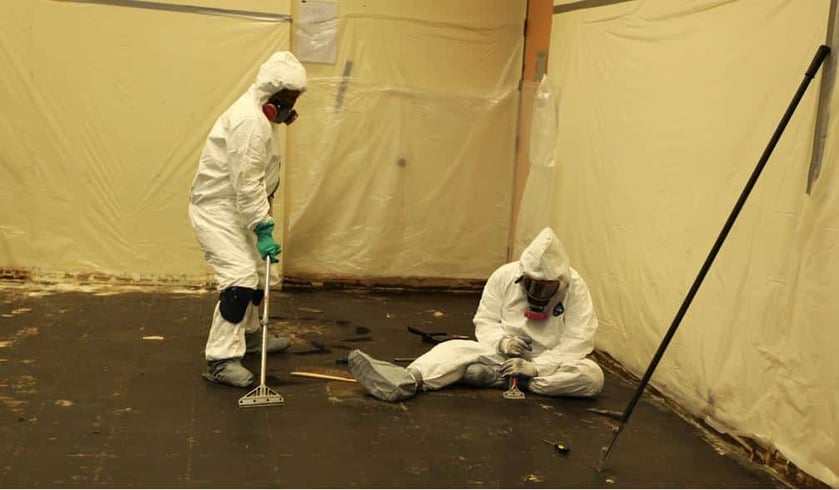
How do I find the best remodeling contractor for my Lake Oswego remodel?
Finding the right remodeler for your project is an important step toward a successful remodel. To find the contractor who is the best fit for your specific project, here are a few things to consider:
- Ask for referrals from people in your neighborhood who have recently remodeled their Lake Oswego homes.
- Find a contractor who is honest with you about the costs from the start and keeps you in control of your budget.
- Look up contractors on the Oregon Construction Contractors Board to make sure they are licensed and insured.
- Don’t just consider the contractor’s cost — consider their process, quality of work, and value they bring to the remodeling process.
Our team at Lamont Bros. knows that the remodeling process can be a challenging one to face alone. That’s why we’re committed to making our clients’ remodeling journey just as much about the process and experience as it is about a high-quality, custom-designed remodel.
Lamont Bros.’ design-build process combines our award-winning design team with a staff of top-quality craftsmen and carpenters. We’re dedicated to providing Oregon homeowners with the expertise and help they need to turn their current homes into their dream homes.
Want to speak with a professional designer about your remodeling plans? Click the button below to schedule a free appointment with a member of our team. When you remodel with Lamont Bros, we’re with you from the first drawings to the final nail in your remodel.
Featured Image Credit: Visitor7, CC BY-SA 3.0 https://creativecommons.org/licenses/by-sa/3.0, via Wikimedia Commons



